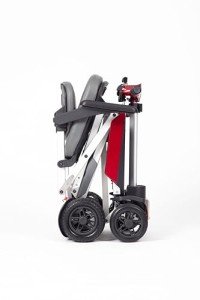What Is The Heck What Exactly Is Portable Mobility Scooters?
Portable Mobility Scooters: Enhancing Freedom and Independence
As the world progressively moves towards inclusivity and accessibility, portable mobility scooters have emerged as an innovative option for people with mobility difficulties. These compact, easy-to-transport scooters are designed to empower users with the capability to navigate their environments with confidence and ease. In this blog post, we will explore the qualities, advantages, and factors to consider when choosing a portable mobility scooter, supported by tables and FAQs to offer a detailed overview.
Comprehending Portable Mobility Scooters
Portable mobility scooters are lightweight, battery-operated automobiles that supply an alternative mode of transportation for those with restricted mobility. Assembled using long lasting products, they are specifically engineered to be lightweight and compact to facilitate easy transport in vehicles or on public transport.
Key Features of Portable Mobility Scooters
Function
Description
Weight Capacity
Many scooters can support users weighing between 250 to 500 pounds
Battery Life
Typical variety of 10 to 30 miles per charge
Speed
Typically runs between 4 to 8 mph
Turning Radius
Differs from 32 to 60 inches, making them ideal for indoor usage
Foldability
Many models can be easily folded for transportation
Wheels
Typically geared up with either strong or pneumatic tires
Portable mobility scooters are ideal for both indoor and outside usage, offering stability and ease of movement.
Advantages of Portable Mobility Scooters
Boosted Freedom: Users can participate in activities that were previously tough, such as shopping and socializing, consequently enhancing general quality of life.
Transport Convenience: Many portable scooters can be quickly dismantled or folded, enabling users to carry them in cars, vans, or public transport.
Cost-Effective: Compared to powered wheelchairs, portable scooters are often more economical, offering an affordable service.
User-Friendly Design: Most designs include instinctive controls, making them simple to run for individuals of all ages.
Variety of Options: With numerous brands and models on the market, potential users can select scooters that fit their specific needs— ranging from off-road usage to compact indoor choices.
Important Considerations When Choosing a Portable Mobility Scooter
- Weight and Portability: Assess the weight of the scooter itself and its elements. Lighter models are normally much easier to transport.
- Battery Life and Range: Consider how far you need to travel on a single charge. If you anticipate long journeys, a scooter with an extended battery life is vital.
- Size and Dimensions: Measure where you'll keep the scooter and ensure it fits easily in your car or home.
- Convenience Features: Look for scooters with adjustable seats, armrests, and other ergonomic functions for included convenience during use.
- Surface Compatibility: If you prepare to utilize the scooter outdoors, ensure it can manage numerous surfaces (e.g., gravel, lawn) with ease.
Consideration
Significance
Weight & & Portability
Affects ease of transport and storage.
Battery Life
Identifies range and freedom to check out.
Size
Crucial for storage and maneuverability.
Comfort Features
Improves the general user experience.
Terrain Compatibility
Guarantees versatility in outside conditions.
Regularly Asked Questions (FAQs)
1. How quickly can a portable mobility scooter go?
Many portable mobility scooters can reach speeds between 4 to 8 miles per hour. Nevertheless, content might vary based upon the design and the weight of the user.
2. Do portable mobility scooters need a license or registration?
In a lot of countries, portable mobility scooters do not need a motorist's license or registration, but it's vital to examine local guidelines.
3. What is the common rate series of portable mobility scooters?
Costs normally vary from ₤ 600 to ₤ 3,000 or more, depending on functions, brand, and specs.
4. Can portable mobility scooters be used on mass transit?
Yes, many public transport systems accommodate portable mobility scooters, however it's suggested to sign in advance concerning policy details and area constraints.
5. What are the maintenance requirements?
Regular upkeep includes battery checks, tire examinations, and keeping the scooter clean. It's advised to seek advice from the user manual for specific maintenance guidelines for your model.
Portable mobility scooters have actually ended up being a lifeline for lots of individuals seeking independence and mobility in their daily lives. Their convenience, ease of usage, and variety of readily available designs allow users to select the best scooter to fit their lifestyle.
For anyone considering purchasing a portable mobility scooter, it's crucial to evaluate personal requirements thoroughly and explore various alternatives on the market. With the ideal option, these scooters can significantly improve mobility and help with a more active lifestyle, eventually causing improved health and wellbeing.
By understanding the functions and factors associated with picking a portable mobility scooter, users can take the primary step towards claiming their freedom when more. Whether for running errands, taking pleasure in the outdoors, or merely walking around the home, portable mobility scooters redefine what it indicates to remain active and participated in life.
